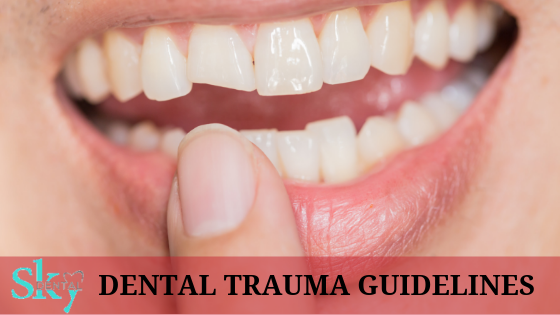Traumatic dental injury is one of the most common oral health problems in childhood. It can cause much pain and distress. Dental trauma is a wound to the teeth or gums that is caused by a sudden physical force. Contact sports are one of the major causes of traumatic dental injury. Similarly, accidents and twist fall in-home may also cause more injuries to teeth that may be major or minor.
Survey about Traumatic dental Injury
Traumatic dental injury is the most attacked oral disorder in preschool children. The period when children use to crawl, stand, walk and run, is the period where this dental trauma takes place. According to the survey, 25% of the school kids experience a traumatic dental injury. Similarly, 33% of adults are suffering from the trauma. The most noteworthy point over here is the majority of the injuries are occurring before the age of 19.
Traumatic dental injury is a painful experience on a physical level, but it also has an effect on emotional and psychological levels. Apart from the cause, trauma victims have a chance of full-time recovery if they receive the right first aid and prompt treatment. However, it is important to know what to do when a dental emergency happens!
Some injuries need immediate medical attention while some can relax for 12 hours. As the children do not have enough experience of traumatic dental injury to manage themselves. The extent of parents and teachers can play an essential role in preventing them.
Let us have a look at some of the most common types of dental trauma and some guidelines for handling them.
Loosened or Dislodged Tooth
As a result of physical injury, even if the tooth is not knocked out, it may also be displaced laterally or settled down. In such a case, a dental specialist needs a complete examination to determine the extent of the injury and to guide treatment. Your endodontist will stabilize and reposition your tooth. The loose tooth can stabilize with a split or root canal treatment may be necessary for permanent teeth that have been displaced.
Knocked-Out Teeth
When a permanent tooth is completely knocked out from its place, the tooth should be handled very gently without touching the root surface itself. The first thing to recover your tooth if it is dirty, gently clean it with water. Do not use soap or any other cleaning agent and never brush the tooth in such cases.
Place back the tooth into its socket if possible. If it is not possible, firstly, place the tooth between the cheek and gum. You can also place it in a cup of cold milk or into a plastic bag with the patient’s saliva. Secondly, control the bleeding by applying pressure to the area. Once you visit the dental hospital, your endodontist will clean and replace it carefully. Similarly, will check for any other dental injuries. A stabilizing splint is necessary for a few weeks.
Chipped or Broken Tooth
Chipped teeth are responsible for the majority of dental injuries. For the broken tooth, the treatment should be done within 12 hours. In most of the cases, chipped tooth crowns can be repaired either by reattaching the broken piece or by placing a tooth-coloured filling. If a significant portion of the tooth crown is broke off, an artificial crown can restore the tooth. If the crack extends into the root, the need for root canal treatment and a full-coverage crown is necessary to restore the function of the tooth.
Jaw pain or Root fractures
Jaw pain that causes due to traumatic dental injury may indicate a broken bone, a gum injury, a damaged jaw or injured teeth. As a result, you can apply ice immediately to reduce the pain and swelling. A traumatic dental injury to the tooth may also result in a horizontal root fracture. If the fracture is close to the root tip or gum line, stabilization with a splint is necessary sometimes for a period.
Endodontists are the dentists with advanced skills in treating traumatic dental injuries. They can often save the injured teeth with their latest techniques and technologies. If you have a cracked tooth with traumatic dental injury, contact your endodontist immediately.
This article is intended to promote understanding of and knowledge about general oral health topics. It is not intended to be a substitute for professional advice, diagnosis or treatment. Always seek the advice of your dentist at dental hospital qualified healthcare provider with any questions you may have regarding a medical condition or treatment.


